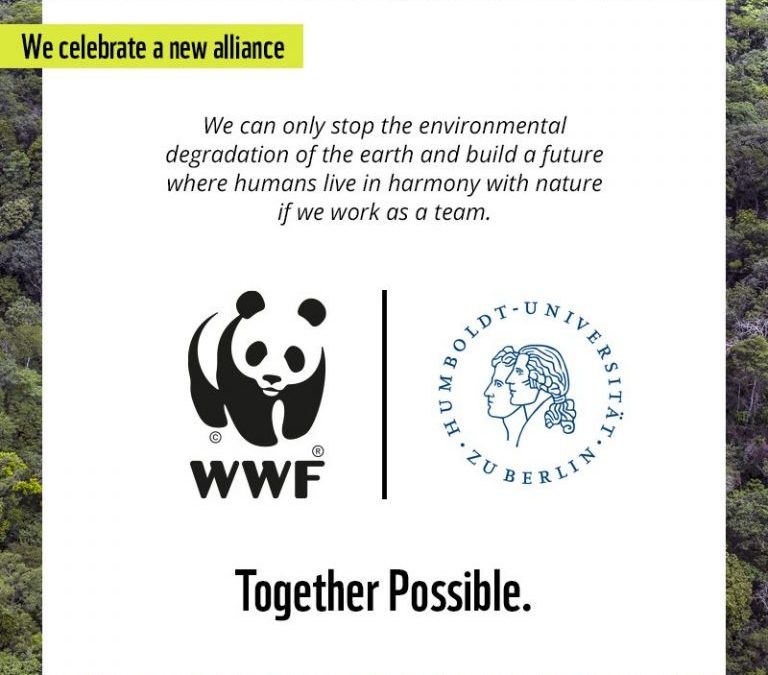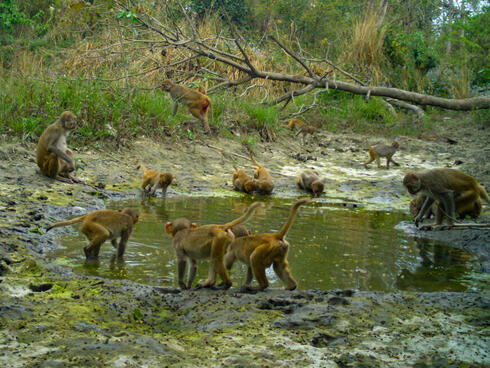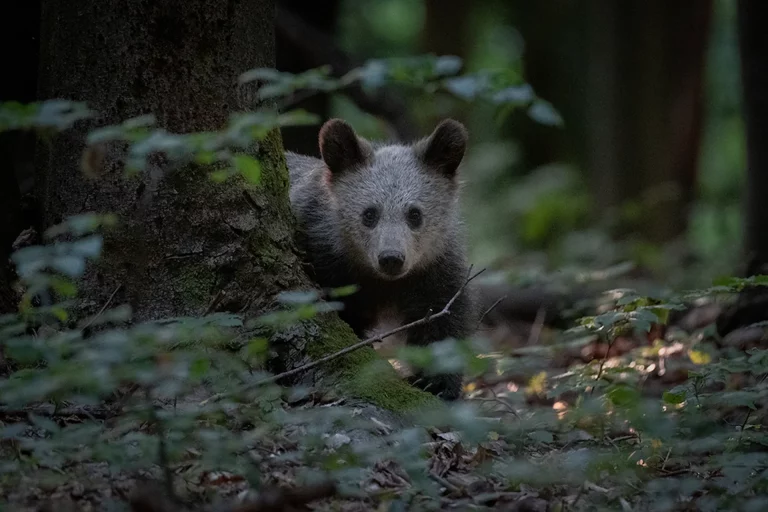By Wendy Elliott, Robin Naidoo, Rafael Antelo
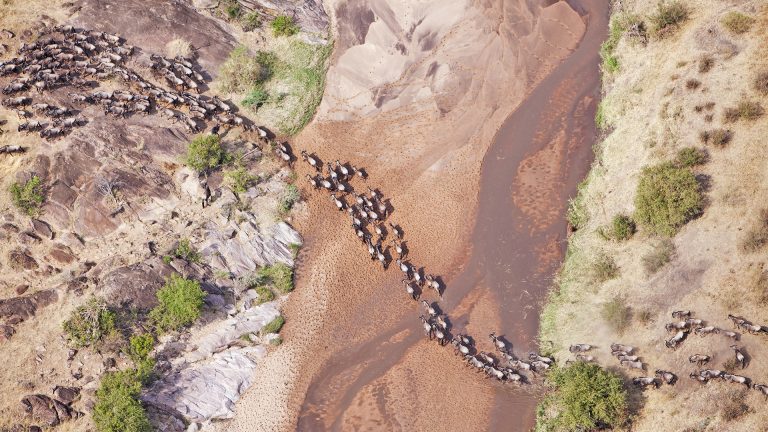
Aerial view of the Blue Wildebeest (Connochaetes taurinus) migration. Up to 1.5 million wildebeest move through the Mara/Serengeti ecosystem each year. This is one of the worlds last great animal migrations. Masai Mara National Reserve. Kenya
When you think of the word ‘connectivity’, what’s the first thing that comes to mind? Probably the ability to get onto the nearest WIFI network.
But there is another kind of connectivity, one that is fundamental to life on earth as we know it — the connectivity of nature, or ecological connectivity as scientists like to call it. The ability of animals to move, and of ecosystem processes to flow.
Why is this important? During their life cycles, animals must travel between different areas to meet their ecological needs. The places they find their food are often different from the places where they gather to mate or spawn, which in turn may be different from the places where young are reared, or where reliable water can be found. Streams need to flow, in order to ensure the freshwater on which everything depends gets to where it is needed. As the seasons turn, environments and species’ needs change, leading to the great migrations of birds, mammals, insects and fish that so captivate people around the world. And now, with climate change, animals are needing to move to new areas as their existing habitats become unsuitable.
Sadly the connectivity of nature is being rapidly eroded. Think of the nearest patch of greenery or park that you know of — if you live in a city, that patch is most likely an isolated island of green in a sea of man-made infrastructure. This is exactly what is happening to our remaining natural spaces, as more land is converted to agriculture, extractives and other uses. 90% or more of the world’s protected areas now exist in a matrix of human-dominated, fragmented land that is rapidly degrading, endangering animal movement and survival.
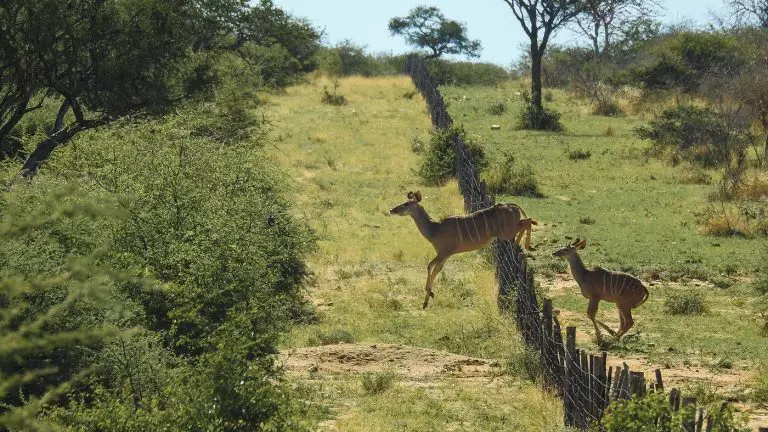
Kudu jumping over fence, connectivity of nature is being rapidly eroded. Think of the nearest patch of greenery or park that you know of — if you live in a city, that patch is most likely an isolated island of green in a sea of man-made infrastructure. ©Dominik Wallner / Shutterstock
In our ever more fragmented world, connecting remaining natural habitats will be the challenge of our time. One in which we must succeed if we are to avoid catastrophic tipping points of biodiversity loss, and loss of the ecosystem services on which we all depend.
The good news is that we have — right now — the opportunity to generate transformational government commitments to address nature’s connectivity. 196 of the world’s governments are Parties to the Convention on Biological Diversity (CBD), which is currently setting the agenda for the next decade of action via its ‘Global Biodiversity Framework’ (GBF). We are pushing for strong connectivity targets throughout the GBF, and there is good progress to build on — last year the UN General Assembly adopted its first ever resolution focused on connectivity of nature, and the Convention on Migratory Species adopted the Gandhinagar Declaration, which called for ecological connectivity to be effectively reflected in the GBF. Initial signs are good — whilst there are still aspects that need strengthening, and the overall framework still needs to be agreed and adopted, connectivity is provisionally included in one Goal and 4 of the Targets of the GBF. If adopted, connectivity would be a core part of the targets on spatial planning, restoration, protected and conserved areas and urban planning.
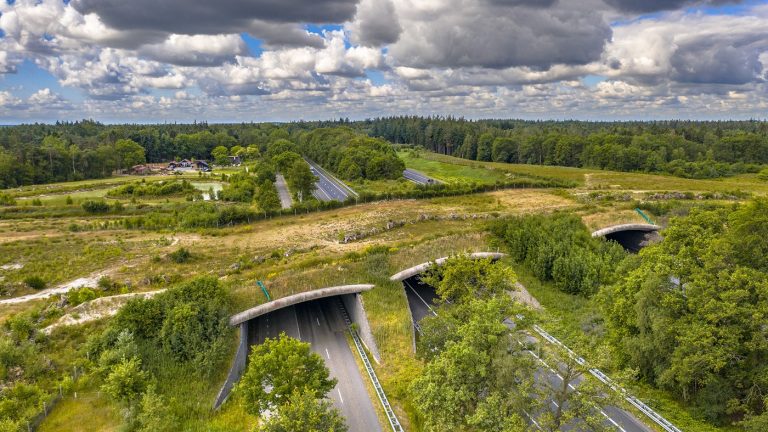
Aerial view of Ecoduct wildlife crossing at Dwingelderveld National Park, Beilen, Drenthe, The Netherlands © Rudmer Zwerver / Shutterstock
But there is a challenge. We have had connectivity targets in the past at the CBD, but those have sadly not been met. Implementation has fallen short. Whilst the target of 17% of the earth’s terrestrial area being protected was almost met — with new protected areas being established that now total 15.73% — much less progress was made in ensuring these areas are connected to each other. How can we avoid such a situation this time around? We believe that one of the keys to ensuring effective implementation of connectivity targets comes in having the right tools to measure connectivity, so that there is transparency and accountability for all actors in ensuring those targets are met. New research published yesterday in Science of the world’s first assessment of terrestrial functional connectivity is so groundbreaking and couldn’t have come at a better time. With this assessment, we can visualize and measure the ability of animals to move between protected areas. We can see how countries are performing relative to their neighbours. And we can track progress over time.
This Science paper introduces the Protected Area Isolation index (PAI), which estimates how isolated each of the world’s terrestrial protected areas are. This estimation is based on published data from dozens of mammal species around the world that show that mammals are able to move greater distances in areas that have been less impacted by people. Combining this relationship with the global Human Footprint Index and harnessing an ingenious approach to measuring connectivity called circuit theory, the results of the paper can be used both to estimate how connected a nation’s system of protected areas is, and to prioritize conservation actions in the world’s most important areas for connectivity.
What is crucial about this approach is that it can be used globally — to track progress of governments in meeting their targets under CBD. But PAI could also be calculated and used at the landscape level, to enable local actors from communities to civil society to governments to measure how actions such as removing fences, building wildlife under or overpasses, and making agricultural lands more hospitable to wildlife improves connectivity in real time, which is essential information for adaptive management.
We are living in exciting times. The science of connectivity is advancing in leaps and bounds — this new paper in Science is complemented by a myriad of new scientific approaches and tools in this field, including methodologies that give us that all important crystal ball — visualizing how connectivity will look in the future, based on climate change and land-use change and development projections. Such future-facing science is crucial to ensure we plan and act today in ways that will have the greatest impact in the long term.
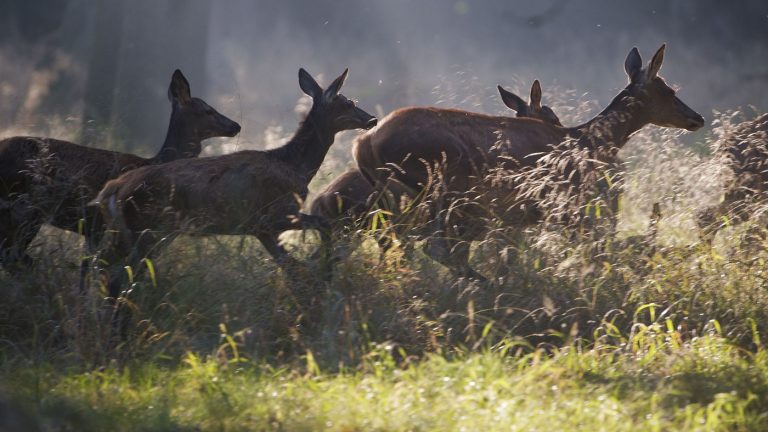
Red deer (Cervus elaphus) hinds running through long grass during rut, Klampenborg Dyrehaven, Denmark ©Wild Wonders of Europe / Florian Moellers / WWF
Complementing these scientific advances, there is a growing body of connectivity conservation in practice happening all over the globe, with actors from a wide range of sectors working together towards a common purpose. Communities in the Kavango Zambezi landscapein southern Africa are managing their lands in wildlife dispersal areas to support wildlife movement, a plantation company in Borneo has reforested a wildlife corridor within their concession to allow for wildlife movement between otherwise isolated reserves, the government of Canada just committed $60 million to a new National Program for Ecological Corridors, and cotton farmers in India are shifting to organic practices, supporting the movement of tigers and other wildlife through their farms.
So we have the science, and we have delivery of connectivity on the ground. We now need the global political momentum and set of commitments that will take this to scale. CBD’s GBF offers this exact opportunity IF we get it right. The growing momentum to protect and conserve 30% of the planet by 2030 — a big step up from the previous 17% target — is encouraging. But unless equal attention is given to ensuring that 30% is well-connected, we will repeat the same mistakes of the past, and fail to secure a resilient future for nature.
We therefore encourage all government Parties to the CBD to continue to strengthen connectivity language in the Goals and Targets, and crucially, adopt a headline indicator on connectivity that will help ensure that the connectivity aspects of this framework do indeed get fully implemented. Last century, the conservation movement was successfully focused on protected and conserved areas — now it is time to connect them. If we succeed in this, we can look forward to a connected, healthy planet that benefits us all.

